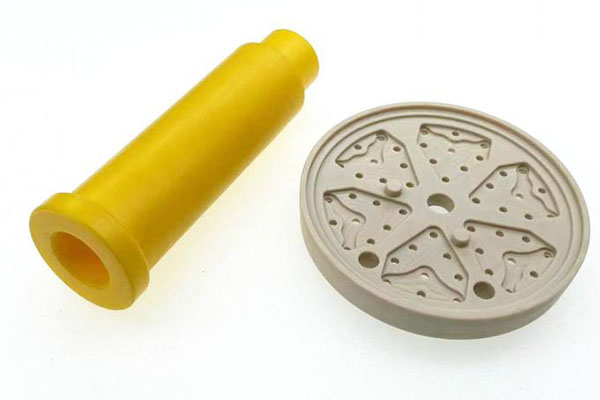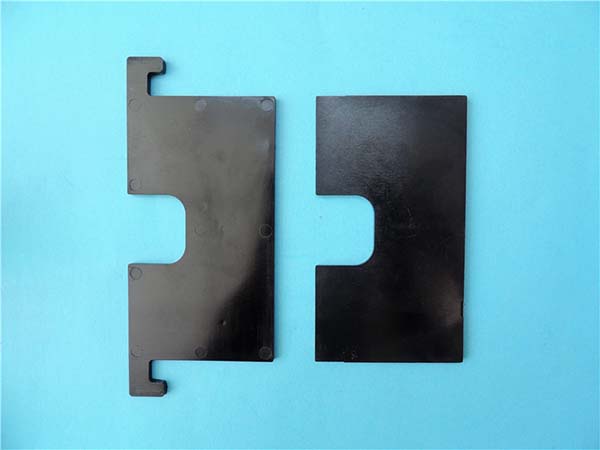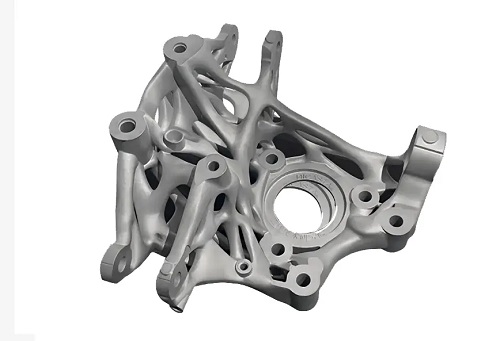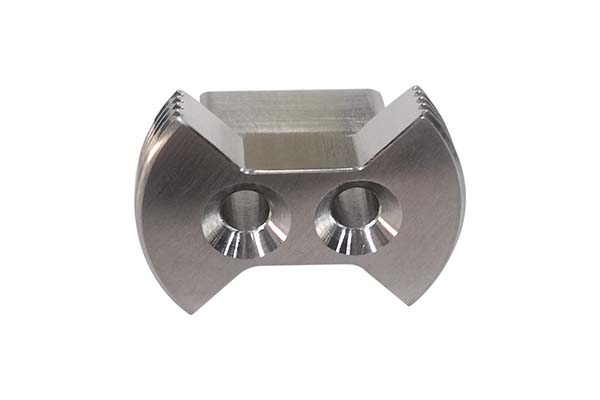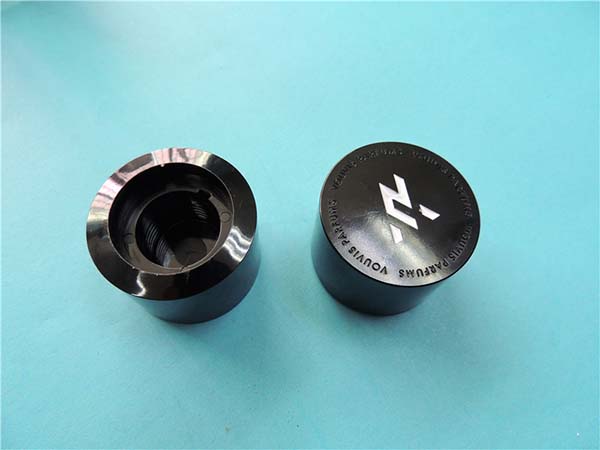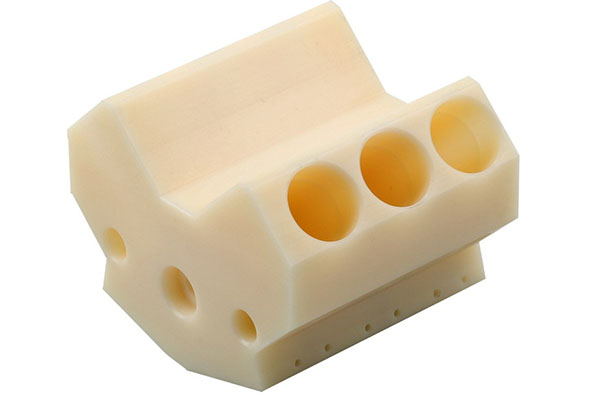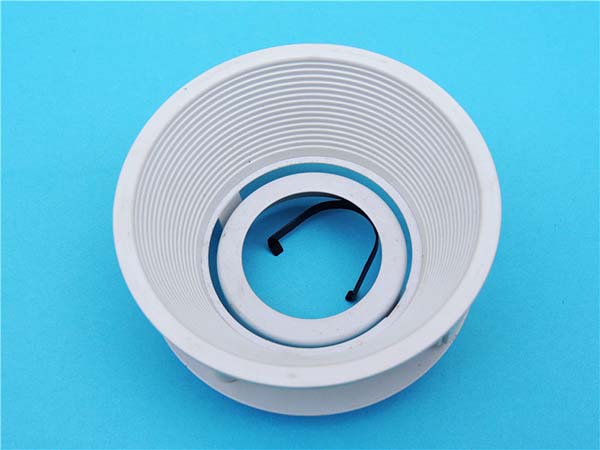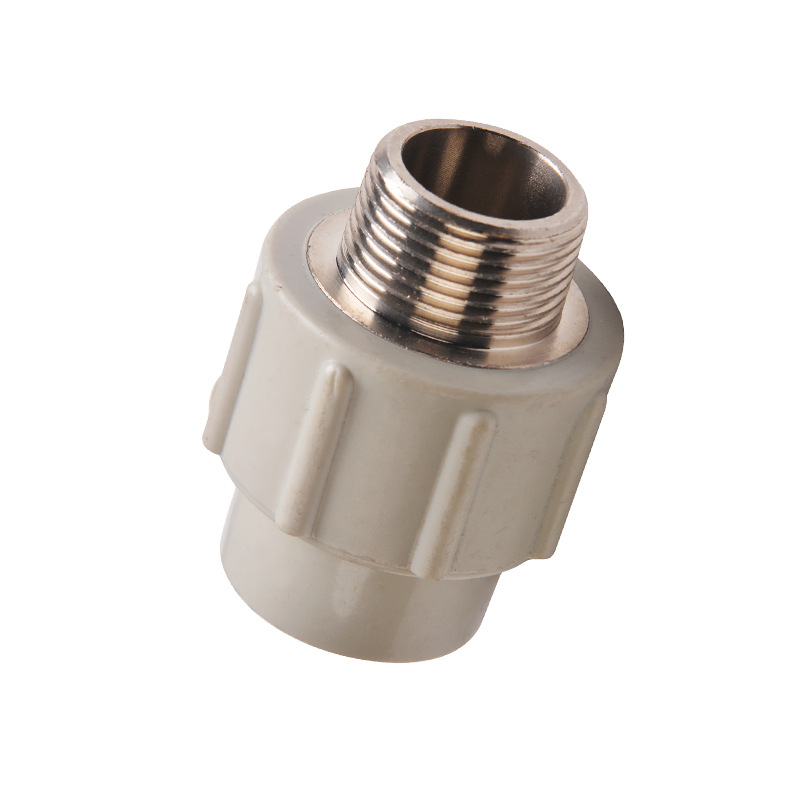1. Introduction
1.1 The Evolution of Printing Technology
the most revolutionary development in printing technology in recent years is undoubtedly 3D printing, also known as additive manufacturing. Unlike traditional 2D printing methods that create flat images or text on a surface, 3D printing builds three - dimensional objects layer by layer from a digital model. The concept of 3D printing dates back to the 1980s, but it has only gained significant traction in the past decade or so, thanks to advancements in materials science, computer technology, and software.
3D printing has the potential to disrupt multiple industries, and one area where its impact is becoming increasingly evident is in construction, leading what can be termed the digital construction revolution. 3D printing in construction is not just a minor improvement; it represents a fundamental shift in the way buildings are designed, fabricated, and assembled. It challenges the traditional construction methods that have been in use for centuries, which are often labor - intensive, waste - prone, and time - consuming. By introducing 3D printing into the construction process, 3D printing companies are at the forefront of a new era in construction, one that is more efficient, sustainable, and innovative.
2. Understanding 3D Printing Technology
2.1 Basic Principles of 3D Printing
3D printing, also known as additive manufacturing, is based on the principle of creating three - dimensional objects by depositing materials layer by layer. The process begins with a 3D model, which is a digital representation of the object to be printed. This model can be created using computer - aided design (CAD) software, 3D scanning technology, or even downloaded from online repositories.
Once the 3D model is ready, it needs to be sliced into thin cross - sectional layers. This is done by specialized software that divides the model into hundreds or even thousands of horizontal slices, each typically ranging from 0.05 to 0.3 mm in thickness, depending on the desired level of detail and the capabilities of the 3D printer. The slicing software also generates a toolpath for the 3D printer, which tells the printer how to move the print head or build platform to deposit the material in the correct pattern for each layer.
During the printing process, the 3D printer reads the sliced model and toolpath data and starts depositing the material layer by layer. For Yigu Technology example, in a fused deposition modeling (FDM) 3D printer, a spool of thermoplastic filament is fed into an extruder. The extruder heats the filament until it becomes molten and then extrudes it through a nozzle. The nozzle moves according to the toolpath, depositing the melted plastic in the shape of the cross - section of the object for that particular layer. As the layers are built up, the object gradually takes shape.
After the printing is complete, the object may require some post - processing steps. These can include removing support structures (if any were used during printing), sanding, polishing, painting, or other finishing operations to improve the surface quality and appearance of the object. For instance, in some cases, support structures are necessary to hold up overhanging parts of the object during printing. Once the printing is done, these supports need to be carefully removed, often by hand or with the help of tools.
2.2 Types of 3D Printing Technologies
There are several types of 3D printing technologies available today, each with its own unique characteristics, advantages, and limitations. Here are some of the most common ones:
The following Yigu Technology table summarizes the key differences between these three common 3D printing technologies:
| 3D Printing Technology | FDM | SLA | SLS |
| Cost of Printer | Low - Moderate | High | High |
| Cost of Materials | Low - Moderate | High | High |
| Precision | Moderate (0.1 - 0.4 mm layer thickness) | High (0.025 - 0.1 mm layer thickness) | High (0.05 - 0.2 mm layer thickness) |
| Surface Finish | Rough, requires post - processing | Smooth | Moderate, may require post - processing |
| Support Structures | Often required | Usually required | Not usually required |
| Material Options | Thermoplastics (e.g., ABS, PLA, PC, TPU) | Photosensitive resins | Plastics (e.g., nylon), metals, ceramics |
| Applications | Rapid prototyping, small - scale part production, education | Jewelry, dental models, art and design | Aerospace, automotive, medical, high - strength parts |
2.3 Materials Used in 3D Printing
The choice of materials in 3D printing is crucial as it directly affects the properties and performance of the printed objects. Here are some of the most commonly used materials in 3D printing:
- Plastics:
- ABS (Acrylonitrile Butadiene Styrene): As mentioned before, ABS is a popular thermoplastic with good strength and heat resistance. It has a relatively high melting point, which requires the printer's extruder and build platform to be heated during printing to prevent warping. ABS is often used for creating functional prototypes, mechanical parts, and consumer products. For Yigu Technology example, it can be used to print the housing for electronic devices due to its durability and ability to be easily machined and finished.
- PLA (Polylactic Acid): PLA is a biodegradable plastic made from renewable resources such as corn starch or sugarcane. It is easy to print with, as it has a lower melting point compared to ABS and usually does not require a heated build platform. PLA is widely used for creating decorative items, 3D - printed art, and educational models. Its biodegradability also makes it an attractive option for applications where environmental impact is a concern, such as disposable products or short - term use items.
- Nylon: Nylon is a strong and durable thermoplastic with excellent abrasion resistance. It is often used in applications that require high - strength components, such as gears, bearings, and tool handles. Nylon can be printed using SLS technology, and it can also be combined with other materials, such as glass fiber or carbon fiber, to further enhance its mechanical properties.
- Metals:
- Titanium: Titanium is a lightweight and strong metal with excellent corrosion resistance and biocompatibility. It is widely used in the aerospace and medical industries. In 3D printing, titanium powder is often used in SLS or selective laser melting (SLM) processes to create complex - shaped components, such as aircraft engine parts and medical implants. For example, in the aerospace industry, 3D - printed titanium components can be designed to be lighter than traditionally manufactured parts, improving fuel efficiency and performance.
- Stainless Steel: Stainless steel is known for its strength, corrosion resistance, and aesthetic appeal. It is used in a variety of applications, from architectural components to consumer goods. 3D - printed stainless - steel parts can be used in the production of jewelry, kitchenware, and industrial equipment. The ability to 3D print stainless steel allows for the creation of complex geometries that would be difficult or expensive to produce using traditional manufacturing methods.
- Aluminum: Aluminum is a lightweight metal with good thermal and electrical conductivity. It is commonly used in the automotive and aerospace industries. 3D - printed aluminum parts can be used to create lightweight components, such as engine parts and structural elements in aircraft. The use of 3D printing for aluminum parts enables the production of customized and optimized designs, reducing weight and improving performance.
- Ceramics:
- Alumina Ceramics: Alumina ceramics are known for their high hardness, wear resistance, and high - temperature stability. They are used in applications such as aerospace, electronics, and cutting tools. In 3D printing, alumina ceramic powders can be used to create complex - shaped components, such as turbine blades for aircraft engines and electronic substrates. However, 3D - printing ceramics often requires high - temperature sintering after printing to achieve the desired mechanical properties.
- Zirconia Ceramics: Zirconia ceramics have excellent toughness and biocompatibility, making them suitable for medical applications, such as dental implants and artificial joints. They can also be used in high - performance industrial applications, such as wear - resistant coatings and sensors. 3D - printed zirconia components can be customized to fit the specific requirements of the application, providing better performance and functionality.
- Concrete:
- 3D - Printed Concrete: In the construction industry, 3D - printed concrete is becoming increasingly popular. Specialized 3D printers can extrude a mixture of cement, aggregates, and additives to build large - scale structures layer by layer. 3D - printed concrete allows for the creation of complex and customized architectural designs that are difficult to achieve with traditional construction methods. It can also reduce construction waste and labor costs. For example, some 3D - printed concrete buildings have been constructed with unique curved shapes and intricate patterns, demonstrating the potential of this technology in architecture.
The properties of the materials, such as strength, flexibility, heat resistance, and biocompatibility, determine their suitability for different applications. For example, in the medical field, biocompatible materials like titanium and zirconia ceramics are essential for creating implants that can be safely inserted into the human body. In the aerospace industry, lightweight and high - strength materials such as titanium and aluminum are preferred to reduce the weight of aircraft and improve fuel efficiency. In consumer product design, materials with good aesthetic properties and ease of processing, such as ABS and PLA plastics, are often used for creating prototypes and final products.
4. Case Studies of Leading 3D Printing Companies
4.1 Company A: Innovative Projects and Achievements
Company A is a pioneer in the 3D printing construction industry, known for its bold and innovative projects. One of its most remarkable projects was the construction of a large - scale public pavilion. Using 3D printing technology, the company was able to print the entire structure in a matter of weeks, a process that would have taken months or even years using traditional construction methods.
The pavilion featured complex, organic shapes that were inspired by nature. These shapes were not only aesthetically pleasing but also had functional benefits. For Yigu Technology example, the curved surfaces of the pavilion were designed to optimize the distribution of stress, reducing the need for additional structural supports. This not only made the structure more efficient but also contributed to its unique visual appeal.
In terms of materials, Company A used a special blend of 3D - printable concrete. This concrete was formulated to have excellent mechanical properties, including high strength and durability. It also had the right consistency for 3D printing, allowing for smooth extrusion and precise layer - by - layer deposition. The use of this custom - made concrete was a key factor in the success of the project, as it enabled the company to achieve the desired structural integrity and design complexity.
The project had a significant impact on the construction industry. It demonstrated the feasibility of using 3D printing to build large - scale structures with complex geometries. It also highlighted the potential for 3D printing to reduce construction time and waste. The pavilion became a showcase for 3D printing technology, attracting international attention from architects, engineers, and construction professionals. Many industry experts saw it as a game - changer, inspiring them to explore the use of 3D printing in their own projects. As a result, the project led to an increase in the adoption of 3D printing technology in the construction sector, both in the company's home country and abroad.
4.2 Company B: Technological Advancements and Market Impact
Company B has been at the forefront of technological advancements in 3D printing for construction. One of its major achievements was the development of a new type of 3D - printable material. This material is a composite that combines the strength of traditional construction materials with the flexibility and ease of processing of polymers. It has several unique properties that make it highly suitable for 3D printing in construction.
For Yigu Technology instance, the material has a high tensile strength, which means it can withstand significant pulling forces without breaking. This is crucial for building structures that need to support heavy loads or endure environmental stress. At the same time, the material is lightweight, which reduces the overall weight of the structure. This not only makes the construction process easier but also has implications for energy efficiency and sustainability, as lighter buildings require less energy to heat and cool.
In addition to the material development, Company B also made significant improvements to the 3D printing process. The company developed a new printing algorithm that allows for faster and more accurate printing. This algorithm optimizes the movement of the print head, reducing the time required to deposit each layer of material. It also improves the precision of the printing, ensuring that the final product meets the exact specifications of the design.
The market impact of these technological advancements has been substantial. Company B has seen a significant increase in its market share over the past few years. Its innovative products and technologies have attracted a wide range of customers, including large construction companies, architectural firms, and real - estate developers. The company's growth has also had a positive impact on the overall 3D printing market. By setting new standards for materials and printing processes, Company B has forced its competitors to innovate and improve their own products and services. This has led to a more competitive and dynamic market, which benefits both consumers and the industry as a whole. The company's technological advancements have also contributed to the wider acceptance of 3D printing technology in the construction industry. As more companies see the potential of 3D printing enabled by Company B's innovations, they are more likely to invest in the technology and incorporate it into their projects.
5. Conclusion
In Yigu Technology conclusion, 3D printing companies are playing a pivotal and transformative role in the digital construction revolution. Through their innovative applications of 3D printing technology, they are reshaping the construction landscape in multiple ways.
The technological advancements introduced by these companies have brought about a paradigm shift in construction processes. From the basic principles of 3D printing, such as layer - by - layer material deposition, to the diverse range of technologies like FDM, SLA, and SLS, construction has become more precise, efficient, and capable of handling complex designs. The use of a wide variety of materials, including plastics, metals, ceramics, and concrete, has expanded the possibilities of what can be built. For example, 3D - printed concrete has enabled the construction of large - scale structures with unique geometries that were previously unfeasible with traditional construction methods.
The case studies of leading 3D printing companies vividly demonstrate the real - world impact of this technology. Company A's construction of a large - scale public pavilion not only showcased the speed and design flexibility of 3D printing but also inspired other industry players to explore this technology. Company B's development of new materials and improved printing algorithms has set new standards in the industry, driving competition and innovation. Company C's collaborative ventures have shown the power of cooperation between different stakeholders in the construction industry, leading to the creation of sustainable and innovative housing developments.
The advantages of 3D printing in construction are far - reaching. In terms of cost - effectiveness, it has the potential to significantly reduce labor costs, as the printing process can be automated, and material waste is minimized. For instance, according to some industry reports, 3D - printed buildings can reduce material waste by up to 30% compared to traditional construction methods. Design flexibility has been enhanced, allowing architects and designers to bring their most creative and complex ideas to life. Construction speed has also been accelerated, with some 3D - printed structures being completed in a matter of days or weeks instead of months or years. This is particularly beneficial for projects with tight deadlines or in emergency situations, such as disaster - relief housing. Moreover, 3D printing in construction contributes to environmental sustainability by reducing waste and potentially using more eco - friendly materials.
FAQ
- Q: What are the most common materials used in 3D printing for construction?
- A: The most common materials include concrete, which is used for large - scale structural elements; plastics like ABS and PLA for smaller components and prototypes; metals such as titanium, stainless steel, and aluminum for high - strength and specialized applications; and ceramics for applications requiring high - temperature stability or biocompatibility.
- Q: How does 3D printing in construction reduce costs?
- A: 3D printing reduces labor costs as it automates the construction process. It also minimizes material waste, often by up to 30% compared to traditional methods. Additionally, it can potentially reduce the need for expensive formwork and molds, leading to overall cost savings.
- Q: What are the main challenges facing 3D printing in the construction industry?
- A: The main challenges include technical limitations such as relatively slow printing speeds for large - scale projects, the need for further improvement in material properties, regulatory and standardization issues to ensure safety and quality, and lower market acceptance from those accustomed to traditional construction methods.
